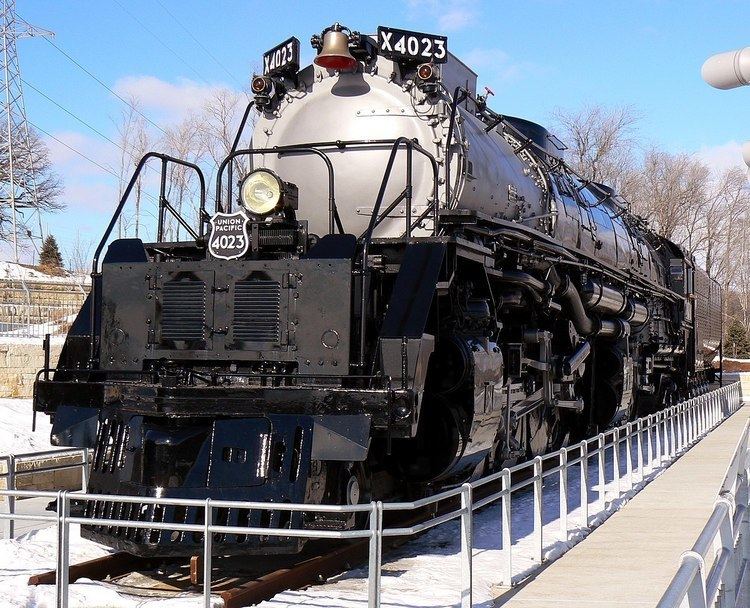 | ||
In the Whyte notation for the classification of steam locomotives by wheel arrangement, a 4-8-8-4 is a locomotive with a four-wheel leading truck, two sets of eight driving wheels, and a four-wheel trailing truck. 4-8-8-4s are commonly known as "Big Boys".
Other equivalent classifications are:
UIC classification: 2DD2 (also known as German classification and Italian classification)
French classification: 240+042
Turkish classification: 46+46
Swiss classification: 4/6+4/6
The equivalent UIC classification is refined to (2′D)D2′ for Mallet locomotives.
4-8-8-4 Big Boys were only produced for the Union Pacific Railroad. Twenty-five such engines were built between 1941 and 1944, numbered 4000 to 4024. Eight of these locomotives survive, all on static public display at various sites in the United States. Union Pacific has announced plans to restore No. 4014 to operation for use in mainline excursion service. No. 4014 is expected to be operational by 2019.
The UP Big Boys were an expansion of the 4-6-6-4 "Challenger" type articulated locomotive. Although their wheels were an inch (25 mm) smaller than those of the Challengers, they were still able to sustain high speeds. Adding four driving wheels increased the pulling power of the locomotive and reduced the need for helper locomotives over steep grades.
Other American railroads considered buying 4-8-8-4s, including the Western Pacific Railroad, which already rostered large 2-8-8-2s and 4-6-6-4s, but diesel locomotives were gaining popularity and soon were able to displace these monster locomotives.
